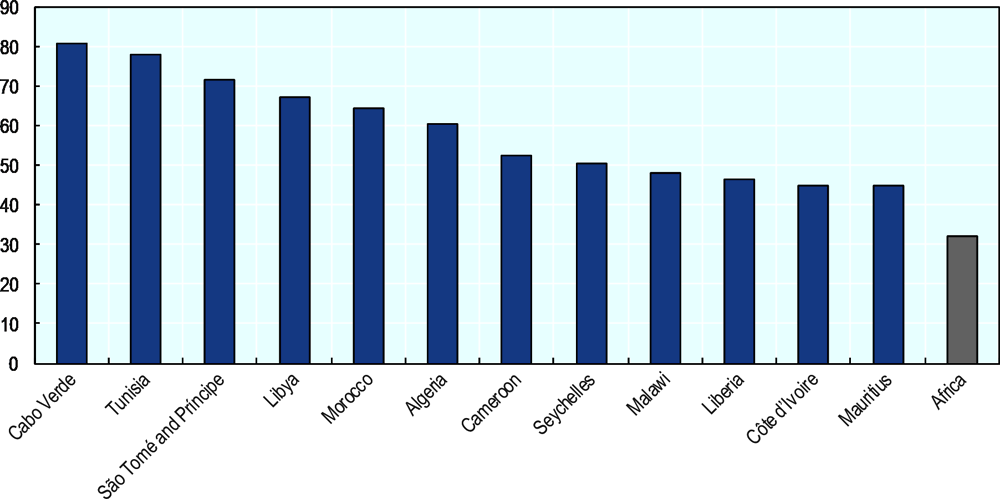The prevailing COVID-19 pandemic has exposed scrawny community delivery services and infrastructure undertakings, and in specific nonexistence of PPP projects, at all stages and all sectors in the Ghanaian Economy—with implications for governments, public service providers, and end-users.
While all germane stakeholders appreciate the significance of PPP agreed projects in boosting the public service delivery, government enterprises and programmes executed so far have often been ad hoc and focused on lessening the COVID-19 pandemic’s outcomes in the short term.
In many circumstances these covered, for example, government taking advantage of familiarized sustenance mechanisms under PPP arranged agreement as well as engagements between governments, private funders, and donors to come to attainable short-term solutions and circumvent pandemics. For instance, the Mr. Senyo Hosi led private partners collaborated with the government to build the centre in the capital to help manage and curb the effects of the COVID-19.
It is relatively palpable Ghana was not equipped for such a pandemic, particularly in terms of prevailing infrastructure and financial budget apportionment to manage the situation. In the above paragraph, argument was made early on that in order to control COVID-19 and make it to the other side, it was “all hands-on deck”. This comprised entities, technology experts, governments appointed officials, the private sector and – the focus of this piece – the health experts.
This article will focus on the health sector and impact of public-private partnerships during states of emergencies, illustrate the blurring of lines between the private and public sector and argue that while these partnerships are a necessary part of COVID-19 response, we must continue to ask critical questions.
For instance, it was only after the pandemic, we saw more partnership between the Nogutsi and government in managing the testing system for COVID-19. Could we see more PPP arrangement among stakeholders in managing the health system of the country?
But, one year into the COVID pandemic it’s well-defined we’re in this for the long haul. There’s now a prerequisite for the Akuffo Addo government to take steps that focus beyond the short term and permanently address the pandemic situation and future occurrence by focusing on infrastructural development.
It’s time to start planning and enthusiastically designing actions that will address the long-term repercussions of COVID-19 on PPP programmes. For governments this unavoidably includes taking a closer look at their current health sector project conduits and enabling policy, legal, and institutional environments and drawing an actionable plan that will address the COVID situation in the country.

A key relevant question to ask afterwards is, Are they fit for better mitigating future similar crises given the likelihood of PPPs being particularly affected due to their long-term nature? Do PPP legal frameworks in particular merit adaptation to enable greater resilience of PPP structures to external shocks?
The way in which both portfolios and PPP frameworks are revisited will have an important signaling effect to the private sector and ultimately determine investors’ and financiers’ interest in re-entering markets in a post-COVID-19 in the country. Obviously various private investors would want to support the government to strengthening the health sector to be resilient to the effects of COVID pandemic.
Effects of COVID on emerging economy
Africa in general is challenged with a twofold supply and demand shockwave appearing in threefold sequential waves: first from the People’s Republic of China (hereafter “China”), followed by OECD countries (initially Europe, and now the United States), and lastly a likely intra-African wave from South Africa.
The weakening in economic activity and employment in 2020-21 will be examined by the enormousness and the tenacity of the shock of the three waves, the effects of pre-existing crises and vulnerabilities (e.g. conflict and fragility in the Sahel, or locusts in East Africa spreading to other regions) and the response by African governments and businesses.
A first wave comes from China through weakened trade channels and lower foreign direct investment (FDI) in the immediate term. By contrast with South Africa or Ghana, least developed countries such as Zambia, South Sudan and Mauritania do not have alternatives to China as a buyer, nor do they have viable alternatives to their commodities for sources of growth (Figure 1).
For instance, South Sudan was expected by the IMF to be the fastest growing country in the world in 2020, growing by 8.2%, but mainly due to oil exports to China (98% of its total exports). Investment projects will also be delayed or cancelled as the country of origins of FDI (Table 1) go through and recover from the crisis.
But we must also add that Ghana expected more than US$1 billion dollars from China for road infrastructure for exchange of the country’s bauxite, but the deal has been delayed by the COVID pandemic. Thus, it is important to look for opportunity in the midst of the pandemic to help accelerate the economy and creation of employment for citizenry.
An opportunity to build better for the future
In the midst of the pandemic, projects arranged under a public-private partnership are an essential instrument as it is evidently clear that governments alone do not have the financial and managerial resources to deliver the full range of services and expertise in the health sector and other sectorial areas in the country. These partnerships with private investors and donors are specifically needed when the pandemic at hand is one that necessitates innovative solutions and managerial expertise that can respond to the current, rapidly-changing landscape.
However, while public-private partnerships are imperative, it is authoritative that during states of emergencies and times of heightened reliance on the private sector, we continue to critically examine the blurring of lines between the public and private actors, the power dynamics present in these partnerships, and finally, the level of transparency within these relationships.
The COVID-19 pandemic increased governments’ dependence on the private sector. The resourcefulness of the private sector has occasioned in their amalgamation into public partnerships. For instance, the private entities in the area of technology has been able to assist the public sector in developing mobile-app to communicate with COVID patients, patient tracking, and protection of medical staff by reducing the number of patients who reports to the hospitals.

With the mobile-app you do self-checklist and advice will be communicated to assist potential COVID patients. Private entities also supported the COVID fund by supporting with various donations to the fund. Other private organizations also donated PPEs in their support to curb the pandemic. Lastly other pharmaceutical organizations in the production of hand sanitizers and PPEs. These are all short-term measures to help curb the pandemic. It’s time to start planning and enthusiastically designing actions that will address the long-term repercussions of COVID-19 on PPP programmes.
Conclusion
When commencing to strategically take actions for long term, the pandemic has created an opportunity to promote better PPP projects arrangement. We will indubitably discover vital lessons during recuperation phases that can improve PPP programmes. For example, we already know that short-term activities implemented by governments in the past one year happen to have been predominantly successful when they discussed with all important stakeholders prior to their implementation. They did well to organize the relevant organizations and ensure sufficient transparency and flexibility in applying these measures.
Importantly, the impacts of the COVID-19 crisis have highlighted certain critical aspects under PPP policy and legal frameworks that underpin the preparation and implementation of good-quality and sustainable PPP projects. To contribute to making PPP legal frameworks fit for a post-COVID-19 world, we therefore hope for broad participation from both public and private sectors, civil society, and the international development community in the consultations on the envisaged guide once an advanced draft will be available during the first quarter of 2021.
>>>the writer is a Researcher and Public Policy Analyst with considerable knowledge and expertise in Public Private Partnership, Leadership inspiration and Public Policy formulation. He is currently a Senior Management Consultant, Gimpa Consultancy and Innovation Directorate (GCID), the Consulting Division of the Ghana Institute of Management and Public Administration (GIMPA). Contact the Author on 0205012686 / [email protected]










